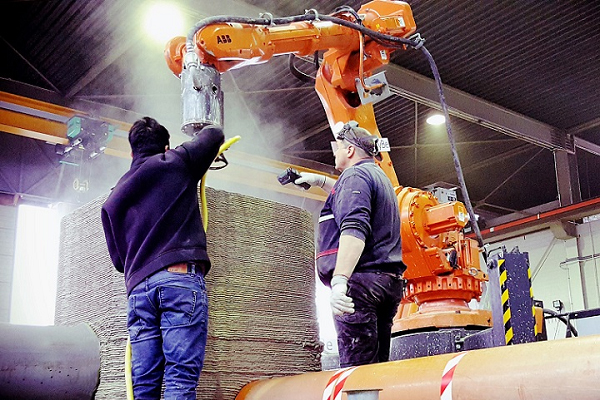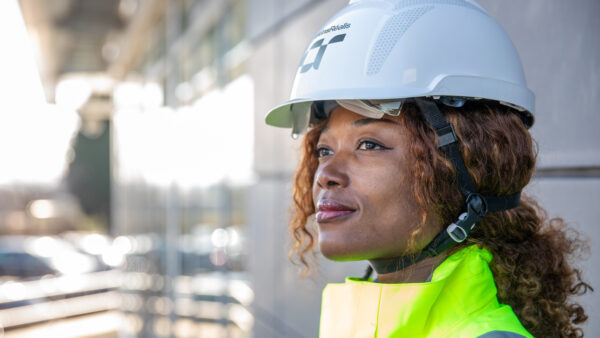An international team has formed to build Europe’s first 3D-printed house. Being printed in a marquee in the central square of Milan, it will be assembled at the city’s Salone del Mobile design festival in April.
The 3D Housing 05 project is being carried out in the Piazza Cesare Beccaria by UK consulting engineer Arup and CLS Architetti of Milan. Dutch concrete printing specialist CyBe Construction is supplying the robot that is carrying out the work and Italcementi is providing advice on the concrete mix.
When complete, the one-bedroom house will have a floor area of 100 sq m.

The robot at work (CyBe)The robot at work (CyBe)
Guglielmo Carra, Arup’s Europe Materials Consulting Lead, says the aim was to create a “paradigm shift” in the way the construction industry operated by reducing the amount of materials required to build and “repurposing or reusing” them at the end of their life.
The house is designed to be disassembled and reassembled, and Arup argues that it will help construction to move away from the make, use, dispose model and adopt a more circular approach. The house in Milan will be remain in the square until the end of April after which it will be moved to Italcementi’s headquarters in Bergamo.
Luca Stabile, Arup’s Building Practice Leader for Italy, adds that the company would use the technology to build larger structures in the future. “3D printing will contribute to breaking the conventional barriers in engineering and architecture. The use of new technologies alongside a new digital approach to the built environment will be instrumental to creating even more complex multi-storey 3D printed buildings,” she says.
CLS Architetti comments that the technology interiors have been designed “with reference to archetypes of the past, in a dialogue with the 3D language”. The interior fittings will include brass window frames and kitchen fittings and marble bath fixtures. The concrete has a layered appearance, which CLS says helps climbing plants to colonise it.
Italcementi says the house will cost about twice as much to create as a traditional dwelling, but adds that that would be reduced over time.
A 2016 video of a CyBe robot in action can be seen here.
Top image: Work under way on 3D House 05 (CLS Architetti)
Further reading






